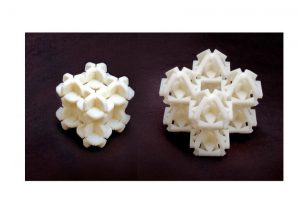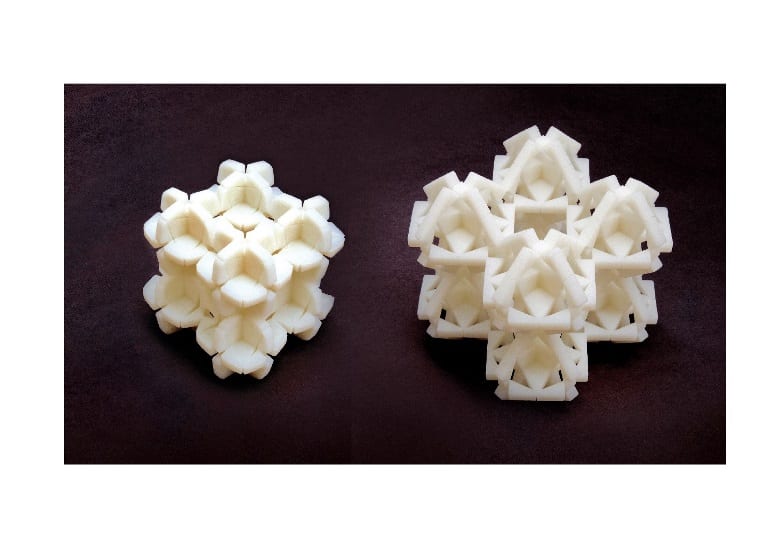Researchers from the University of California, Irvine and Los Angeles, propose an architected material that can be constructed from virtually any base material (metallic, ceramic, polymer or composite), at any length scale and dimensionality (1D, 2D and 3D), enabling complex shape morphing patterns. In addition, this material is fully reversible which means it can be infinitely recovered wih no compromise on the efficiency, integrity or life of the structure. This new material could pave the way for manufacturing of highly adaptable components that are fully reconfigurable based on functionality. Some of the specific possible applications include portable structures, impact absorbers, devices with tunable phononic response and vibration isolators.

Multi-stable shape reconfigurable architected materials with dynamic hinges that enable different combinations of strength, volume and complex shape morphing. The proposed architected material can be constructed from virtually any base material, at any length scale and dimensionality.
Many strategies towards this goal have been proposed before. Among those are foldable origami, tension controlled tensegrity structures, shape memory morphing materials and structures, shape-shifting jamming materials and modular self-assembled structures. In most of these material systems, the ability of the material to morph is very limited in terms of direction and amplitude of deformation.
In order to overcome this, Haghpanah et al developed an analytical model for the behavior of bi-stable structural elements. This model provided valuable insights on the mechanical response (including failure) of shape reconfigurable materials and it was used to explore a multi-parameter design space. All the analytical and numerical investigations were validated by experiments to characterize the mechanical behavior of building blocks and their integration in architected materials. Complete design maps were produced towards a specific unit cell topology, which was shown to have remarkable energy absorption capabilities not seen before for fully reconfigurable structures. Not only the researchers showed a shape reconfigurable material that is orders of magnitude stronger than previously published concepts, but also can be applied to many materials.

















